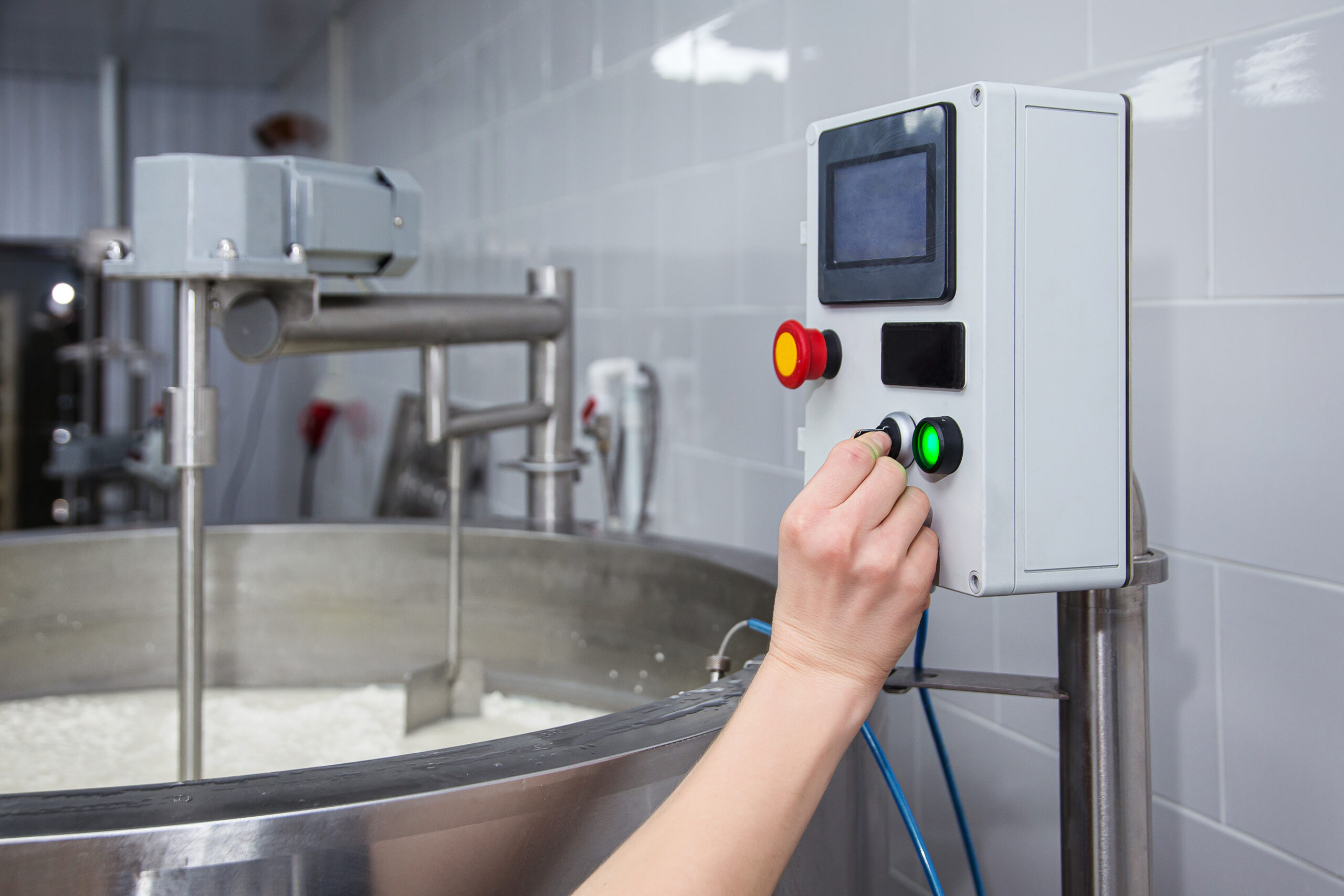
Maintenance may not be sexy, but facilities management leaders know it’s the key to increasing uptime for critical assets and equipment — delivering savings straight to your company’s bottom line. To cut repair costs and avoid losing revenue when essential equipment goes down, savvy facilities managers can focus on these five steps below to maximize equipment uptime.
What is equipment uptime?
Equipment uptime is defined as the percentage of time that a machine, piece of equipment, or asset is available and fully operational. For example, for grocery store equipment, this includes everything from smoothly sliding front doors and speedy checkout machines to food-preserving refrigeration cases and reliable emergency generators.
How can increased uptime improve your bottom line?
The value of equipment uptime and the maintenance needed to support it is often overlooked until equipment breaks down. Then the importance becomes painfully obvious. Unplanned downtime and service delays often trigger costly emergency repairs and encourage frustrated customers to turn to competitors – leading to lost revenue and bad reviews.
Some of the measurable benefits of increasing uptime include:
- Lower costs for equipment repair and premature replacement
- Protection against lost revenue
- Better customer service and higher satisfaction ratings
- Less employee stress, which can support retention efforts
- Energy cost savings and sustainability improvements
Five essential ways to improve equipment uptime
While they can sometimes be the unsung heroes of facilities management, the main drivers for increasing uptime center on prevention, fast service supported by smart supply chain planning, proper operation, and ROI-focused technology.
- Preventive maintenance planning
- Outcome-based service plans for reactive maintenance
- Supply chain planning
- Implementation of best practices for equipment operation
- Technology-enabled monitoring and maintenance
1. Start with a priority-driven preventative maintenance plan
Establishing an effective preventive maintenance plan (PMP) is the first step to increasing facilities equipment uptime, as it builds a solid foundation for maximizing performance, avoiding costly emergency repairs, and extending asset life.
An effective preventive maintenance plan includes:
- Asset inventory: Make, model, serial number, specifications and capabilities, location, acquisition date, expected lifespan, and QR or barcode for identification and tracking
- Asset maintenance history: Dates performed, parts used, labor and parts costs, and current condition
- Prioritization and criticality: To guide maintenance scheduling, you need to know how important an asset is to daily operations, giving high priority to safety concerns. For example, air conditioning, refrigeration of perishables, front doors, and generators during storm season would be high priorities for grocery and convenience stores. On the other hand, if one of several cash registers goes down, that would be a lower priority — unless it’s during the holidays or other busy season.
- Schedule: Preventive maintenance is scheduled to minimize disruption to operations and customer service, with performance based on time periods (by month, quarter, etc) or usage, such as hours of operation.
- Goals and KPIs: Your plan should outline what you want to achieve, aligning with broader strategic business goals, such as improving customer service. To measure success, set key performance indicators (KPIs), such as planned maintenance percentage, which compares time spent on planned vs. unplanned maintenance.
2. Outline clear, outcome-based service plans for reactive maintenance
Even with the best preventive maintenance, equipment still breaks down. “When essential equipment stops working, you want to know you’ll be back up and running as soon as possible. One of the best ways to ensure less downtime is to have a service plan that sets clear expectations for response times with partners who have well-trained Multi-Skilled and RHVAC Technicians at the ready,” said Cristee Monahan, Vice President for Central Operations at City FL.
A solid service plan includes service level agreements (SLAs) that detail expected work completion time and costs for specified equipment repairs and maintenance.
A common problem with equipment repairs is dealing with multiple subcontractors, which can lead to poor accountability and communication — not to mention delays and higher costs, said Monahan. To avoid these issues, she explains that City technicians perform up to 95%* of maintenance tasks directly because they receive extensive training across multiple skills. They are also assigned and dedicated to service specific stores. “They can respond rapidly and solve problems faster because they’re familiar with each facility. They know these stores inside and out,” she said.
For repairs on proprietary equipment that must be performed by the manufacturer, Monahan recommends maintaining strong vendor relationships to help ensure priority service.
3. Avoid repair delays with strong supply chain plans
Now more than ever, retailers know how drastically supply chain problems can disrupt their business. Besides missing products and empty shelves, supply issues can also mean long delays in completing important repairs. That’s why optimizing supply chain plans plays an important role in improving equipment uptime.
Whether repairs are being performed in-house or outsourced, Monahan advises that facilities leaders ensure that those responsible are tracking availability of essential parts and that they establish strong relationships with suppliers.

4. Encourage best practices for equipment operation
Basics such as regular cleaning and proper handling by operators can go a long way to prevent excessive wear and tear, avoid breakdowns, and extend the life of expensive store equipment. Most retailers include these steps as part of their staff training, but with rapid turnover, proper user operation may be an area that gets overlooked.
To strengthen best practices in equipment operation, managers can encourage staff by explaining how a little TLC can help keep customers happy by avoiding breakdowns.
5. Utilize technology to make equipment maintenance smarter and faster
More and more leading retailers are adopting technology solutions to achieve increased asset uptime and cost savings by making it easier to take a proactive approach to maintenance. Equipment sensors tied to computerized maintenance management systems (CMMS) and energy management systems (EMS) enable remote monitoring to generate instant alerts, spot patterns, and issue work orders automatically when repairs are needed.
For example, City uses SOUNDTech+, a predictive maintenance tool powered by DST (Discovery Sound Technology), which relies on ultrasound diagnostics to determine whether equipment is operating properly or requires maintenance — before a breakdown occurs — extending equipment life, improving uptime, and lowering costs for City’s partners.
City also uses its Spark+ system to continuously monitor temperatures of refrigeration, hot bars, and other food and beverage equipment at partner sites. If temperatures spike or fall unexpectedly, Spark+ sends alerts to kick off investigation so problems are addressed before food can spoil, avoiding food waste and costly emergency repairs. In some cases, problems can even be fixed remotely, saving time and costs.
In addition, facilities management and service providers are using machine learning and artificial intelligence (AI) to make preventive maintenance more predictive, which can extend asset life and lower total costs. For instance, City uses real-time data combined with in-depth equipment knowledge and repair histories across thousands of locations and service transactions to reveal patterns. Based on these insights, service providers can intelligently manage maintenance schedules and inform operations and finance leaders on capital planning decisions.
Technology allows us to increase uptime by getting ahead of equipment breakdowns and managing the end of life by proactively replacing equipment before it actually goes down.Cristee Monahan
But while technology offers tremendous advantages, it can be beyond some companies’ budgets. Monahan recommends that retailers base their investments on realistic ROI projections and business priorities. While using sensors to remotely track generator readiness, temperatures, and humidity will deliver significant ROI in uptime, energy savings, and sustainability, it’s probably not worth putting sensors on every type of equipment. Retailers may also be able to save on expensive software purchases by working with a technology-enabled facilities management partner that’s able to connect to their legacy systems.
“When choosing a facilities management and service provider, companies need to look for providers who can meet their technology needs, no matter the level. At City, we can adapt to our partners’ level of technology,” said Monahan.
*Applies to critical trades

 2016: City US is established in North America, in partnership with Southeastern Grocers (SEG), servicing over 750 supermarkets across 7 southern states.
2016: City US is established in North America, in partnership with Southeastern Grocers (SEG), servicing over 750 supermarkets across 7 southern states. 1985: Willie and Susan Haughey establish City Refrigeration Holdings (UK) Ltd in Glasgow, UK.
1985: Willie and Susan Haughey establish City Refrigeration Holdings (UK) Ltd in Glasgow, UK. 2009: City Australia launches in Melbourne, in partnership with Coles, servicing over 700 supermarkets across the country.
2009: City Australia launches in Melbourne, in partnership with Coles, servicing over 700 supermarkets across the country. 2015: City Asia launches in Kuala Lumpur, Malaysia, in partnership with Dairy Farm, servicing over 205 supermarkets across the region.
2015: City Asia launches in Kuala Lumpur, Malaysia, in partnership with Dairy Farm, servicing over 205 supermarkets across the region.